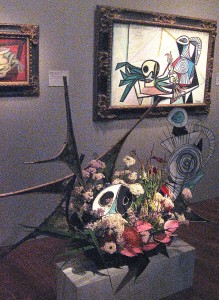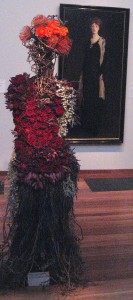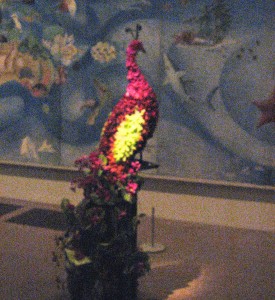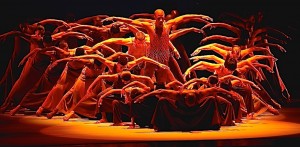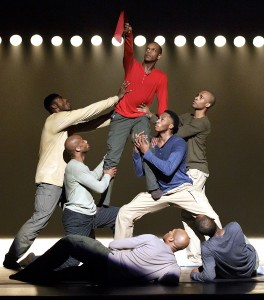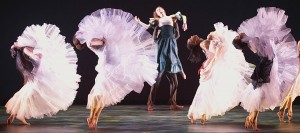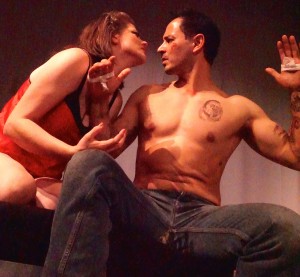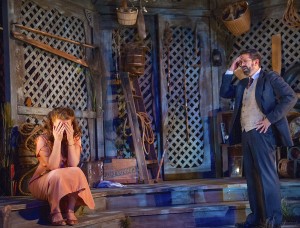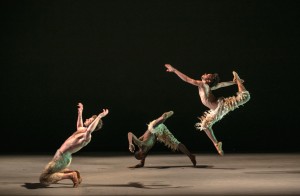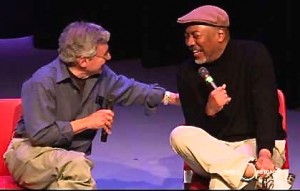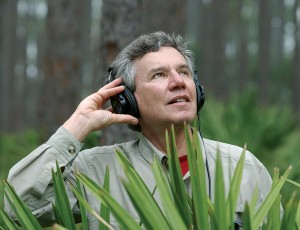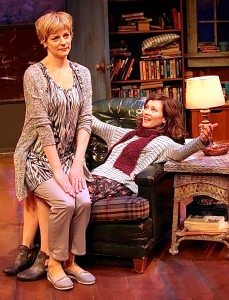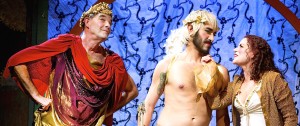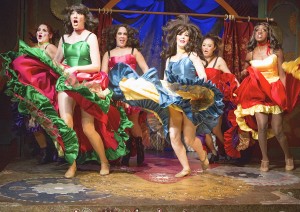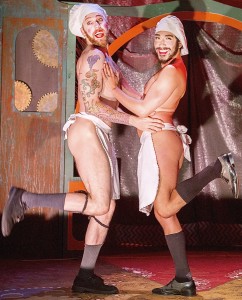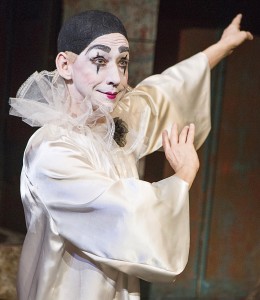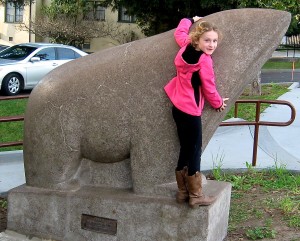[Woody’s [rating: 4]
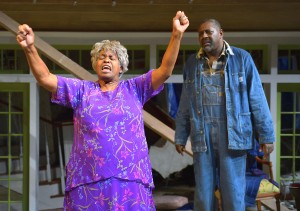
Shelah (Cheryl Lynn Bruce) tests her faith as Creaker (Michael A. Shepperd) looks on in “Head of Passes.” Photo courtesy of kevinberne.com
When “Head of Passes” ended, a stunned audience forgot to clap for a few seconds.
Thunderous applause then filled the void.
And the crowd silently shuffled from the Thrust Stage of the Berkeley Rep, struggling to decrypt mentally what it just experienced.
“Head of Passes” is a play on many levels — an epic about loss and an African American family in the marshlands of southern Louisiana, certainly — but mostly it’s about faith.
And after a first act that ground exceedingly slow, I could intensely feel playwright Tarell Alvin McCraney’s power in the second — his power to enthrall, to confuse, to evoke long discussions afterward.
My wife and I dissected it for a full hour on the way home.
To no conclusion.
Or accord.
The allegorical, mostly tragic drama bursts with homages to the biblical tale of Job.
But the modernized lightning rod for good and evil is Shelah Reynolds, a widow so pious she can’t stand even hearing the phrase deviled eggs.
She’s seriously ill, coughing up blood.
An increasingly dense storm threatens her home, outside and in, and a metaphorical tempest imperils her family on the eve of her birthday.
A remarkable Cheryl Lynn Bruce plays Shelah with alternating disorder and control, making the central role even more her own than when Chicago’s Steppenwolf Theatre Company first produced the play in 2013.
McCraney’s reworked other parts of “Head of Passes” as well, declaring in a Berkeley Rep magazine interview that it’s gotten “deeper and more focused.”
Shelah’s sermonettes to her family and herself gradually build to a soliloquy-crescendo in a tirade to God about life and sin.
Her patience and her rage become the hues on a canvas splashed with semi-madness, muddle and, finally, clarity.
The gifted cast adds many textures.
Francois Battiste and Brian Tyree Henry ably support Bruce as Shelah’s adult sons, garrulous Aubrey and lethargic Spencer.
And Nikkole Salter brings her drug-addicted half-daughter, Cookie, to life.
But I dare not omit any actor because each does well in a play in which family relations are cavernous, complicated and chaotic.
That includes Michael A. Shepperd as Creaker, a giant-sized employee responsible for much of the play’s sparse but welcome humor; Kimberly Scott as Mae, a bouncy friend; Jonathan Burke as Creaker’s indecisive son, Crier; and James Carpenter, as Shelah’s dispirited healer, Dr. Anderson.
Finally, a buff angel only Shelah can see hangs around, tolerantly watching and waiting for her to strip away her wig, outer garments, character armor and lies.
Sullivan Jones portrays him as embodied with both menace and hope.
Despite McCraney’s talent and the skill of the players, G.W. Skip Mercier’s set almost overpowers everything. It comes apart on cue, ostensibly destroyed by the deluge, with parts of the stage incrementally becoming a moat-like riverbank.
It’s the most memorable stagecraft I’ve seen in decades, as imaginative as the falling chandelier of “Phantom.”
Longtime McCraney collaborator Tina Landau directed “Head of Passes,” which refers to the tri-forked marshlands where the Mississippi joins the Gulf of Mexico.
She’d been with McCraney at Steppenwolf, too, so the pair has shaped the play from its genesis.
The playwright, Bay Area theatergoers may remember, created the Brothers/Sisters Plays, a trilogy performed at the Marin Theatre Company, the Magic Theatre and the American Conservative Theater.
For me, “Head of Passes” brings to mind, at once, the Old Testament, Kafka and Shakespeare.
Inspired antecedents, indeed.
And powerful.
“Head of Passes” plays at the Berkeley Rep’s Thrust Stage, 2025 Addison St., Berkeley, through May 24. Night performances, 8 p.m. Tuesdays and Thursdays through Saturdays, 7 p.m. Wednesdays and Sundays. Matinees, 2 p.m. Thursdays, Saturdays and Sundays. Tickets: $14.50 to $79, subject to change. Information: (510) 647-2949 www.berkeleyrep.org
Contact Woody Weingarten at voodee@sbcglobal.net or check out his website at http://vitalitypress.com


